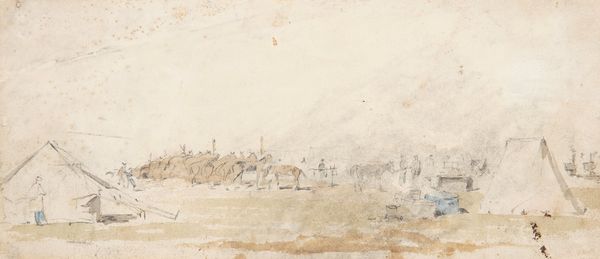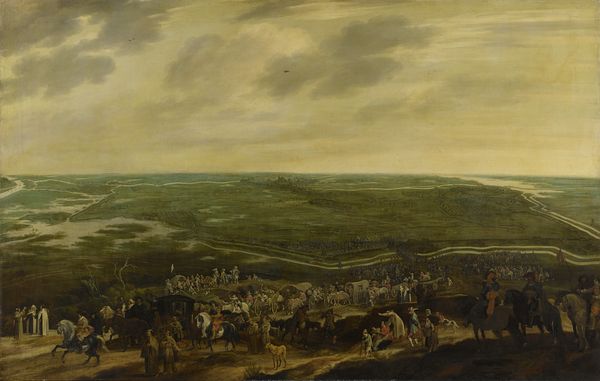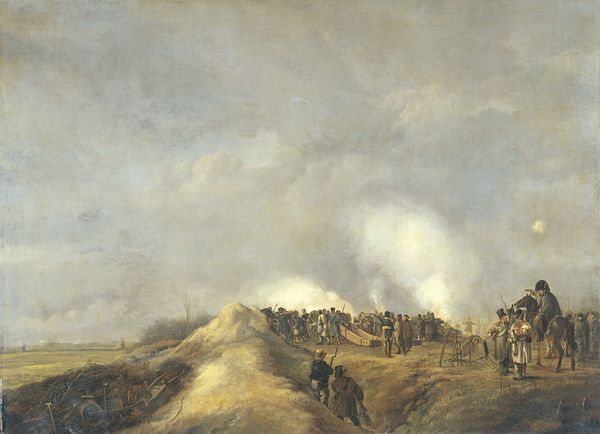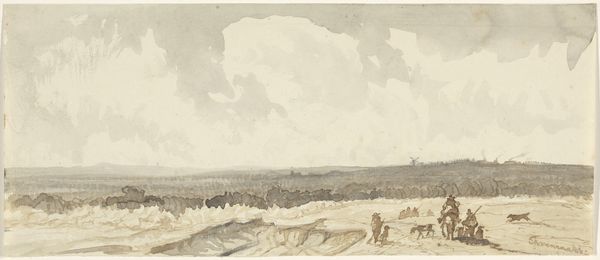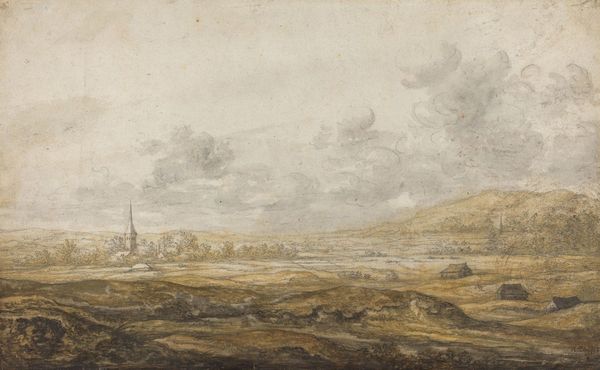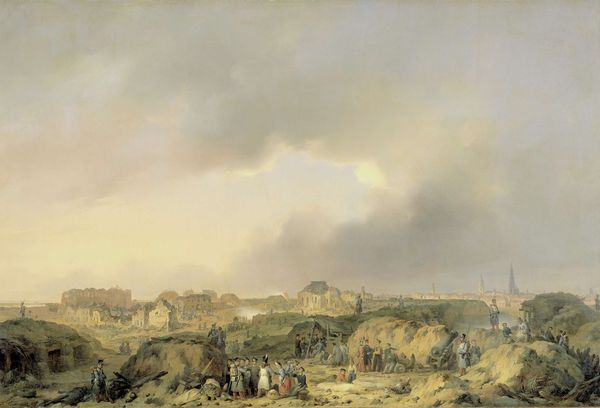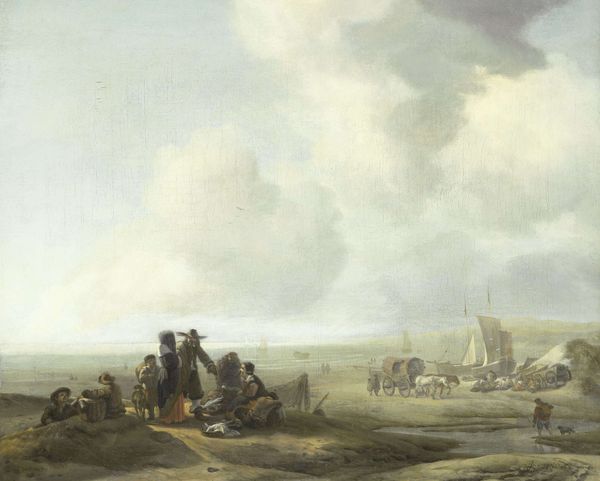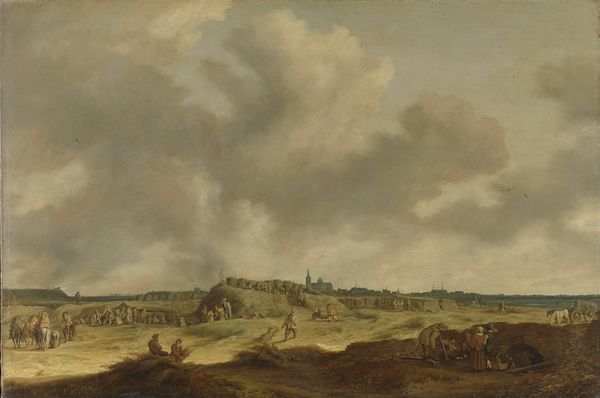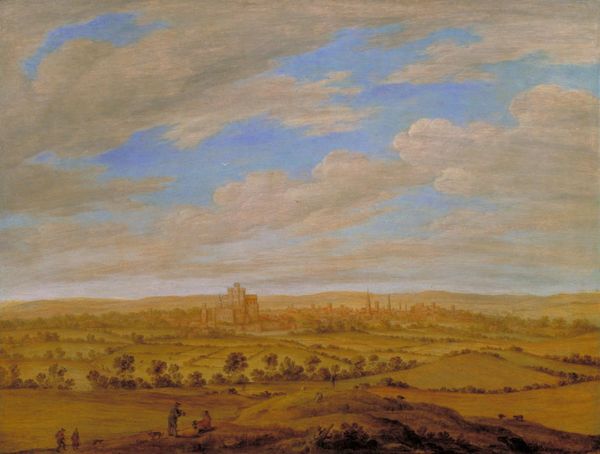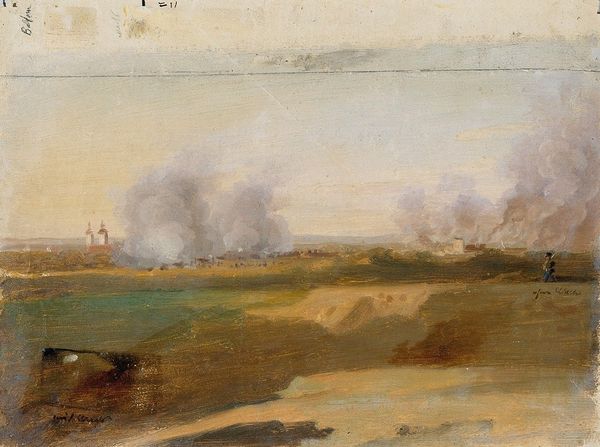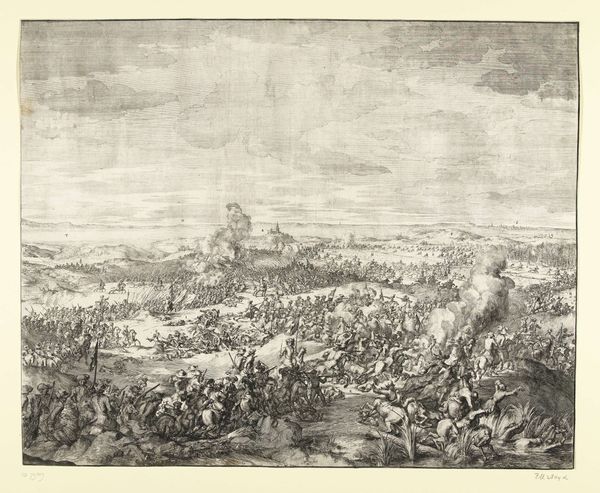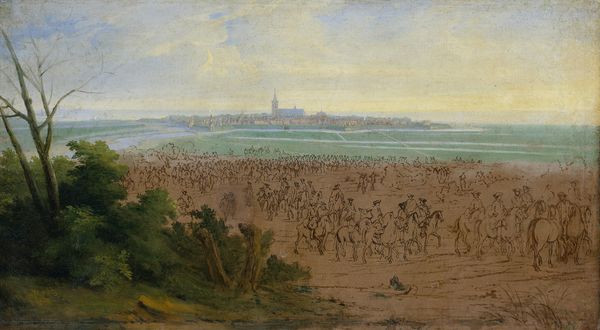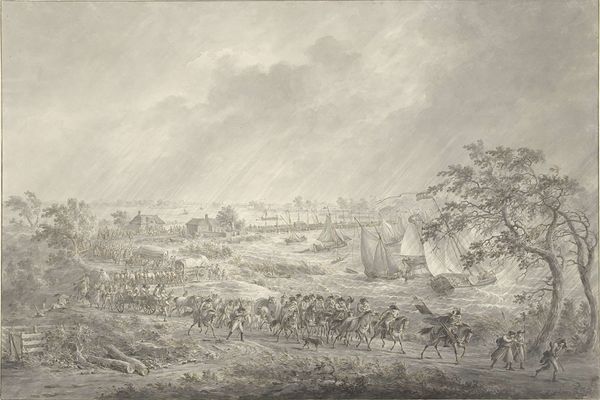
painting, watercolor
#
tree
#
sky
#
painting
#
landscape
#
figuration
#
oil painting
#
watercolor
#
romanticism
#
cityscape
#
history-painting
#
watercolor
Copyright: Public domain
Curator: Looking at this watercolor by Albrecht Adam, titled "Festive entry into a German city," I immediately notice the palpable anticipation captured in the crowd gathered outside the city walls. Editor: It definitely has that sweeping, panoramic feel common in Romantic landscapes. But what strikes me is the sheer scale. The tiny figures emphasize the vastness of the landscape and the city itself. Were these kinds of works often made as mementos of important social gatherings or visits? Curator: Indeed. Adam, working primarily as a battle and court painter, often documented such events. In this case, the painting, created using watercolor, emphasizes the transient nature of these occasions and provides valuable insight into the social conditions of the early nineteenth-century elite celebrating or entering cities. I’m especially drawn to his ability to depict the landscape as the active stage of these social rituals. Editor: Right. It seems a rather muted palette actually enhances the historical weight, don’t you think? And I wonder, how was such a wide expanse typically painted, from the foreground crowd to the background architecture—all in what appears to be a single viewing angle? Was Adam working with a particular lens or proportional aid? Curator: The production of such large watercolors was a testament to the skill of artists and the workshops. By studying the pigments, we see consistent use of techniques, layering transparent washes, to build a remarkable degree of depth. Also, this image contains a very interesting representation of trees and buildings—these visual elements of architecture give the piece a feel for the culture of that moment. Editor: A compelling snapshot, offering both spectacle and intricate material detail, capturing both human endeavor and landscape elements of cultural memory! Curator: Agreed, it encapsulates a singular event and hints at so much more about how celebrations were woven into the everyday lives of this culture, wouldn’t you agree?
Comments
No comments
Be the first to comment and join the conversation on the ultimate creative platform.
